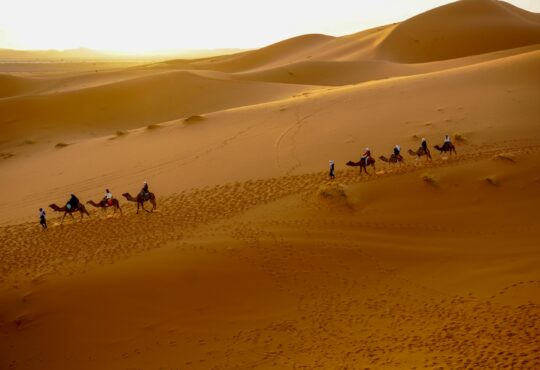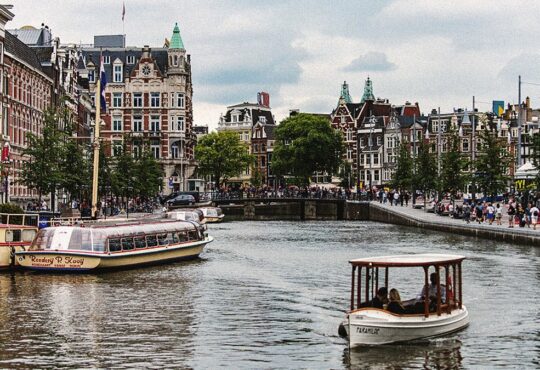There is so much to consider when thinking about backpacking essential items. The reason this task is so daunting is that we are used to having so many things packed for our trip!
Backpacking is supposed to be practical but also safe and enjoyable. These are some of the simple and often overlooked the most essential backpacking items that will keep you safe, hydrated, recharged, and occupied, no matter where you go.
Save it for Later!
This post might contain affiliate links. Read our full disclosure here.
A Good Travel Backpack
Recommended by Sean Lau of LivingOutLau
Photo Credit: LivingOutLau
If you are planning a backpacking trip (Especially your first trip), one of the most overlooked backpacking items to bring with you is a travel backpack. We are not talking about any ordinary backpack; we are talking about a well-made travel backpack that fits your body so it almost feels like it is an extension of you. A backpack that molds your body so well that when you are carrying 20 pounds on your back, it feels like nothing.
Our personal favorite is the Osprey Farpoint 55 L backpack. Its iconic feature is the 13L detachable daypack, leaving the 42L as the main pack and the perfect place to store all your clothes, toiletries, and other bulky items. On the other hand, the detachable day pack is perfect for carrying your water bottle, camera, and other small necessities for small excursions.
This convenient combo gave us the flexibility to explore many countries like Bali, Colombia, Peru without ever running into issues with space and portability.
A lightweight First Aid Kit
Recommended by Luke of Wild About BC
One of the essential backpacking items that should always be part of your backpacking checklists no matter what is a lightweight first aid kit.
Your lightweight first aid kit doesn’t need to have a lot in it. It really should be a small, lightweight package with just the essential items to ensure a safe backpacking trip. You’ll want something with band-aids, dressings, antiseptic wipes, after-bite sting relief, safety pins, some tape, and blister relief. All of this can fit into a surprisingly small package that you won’t even notice in your bag but you’ll be delighted that you have it when the time comes.
We also recommend getting something that has a waterproof seal so that even when you get caught out in the elements all your first aid gear will still be usable.
Reusable Water Bottle
Recommended by Steph & Lewis of Book It Let’s Go!
A reusable water bottle is a backpacking essential piece of gear on any backpacking trip. Whether you are spending the weekend hiking in a national park or 6 months backpacking through Southeast Asia, a good quality water bottle that you can refill is an easy zero waste travel swap you can make.
Reusable water bottles come in many different types from silicone foldable bottles, which are incredibly lightweight and save space in your backpack, to insulated flask style bottles that take up more space and are heavier but have the advantage of keeping your water colder for longer periods.
You can also get hydration bladders that can be incorporated into a backpack, this eliminates the need to carry an additional bottle. Hydration bladders such as a Camelbak usually have a long straw that you have over your shoulder to drink from, and they are also good for keeping water cooler in hot weather.
Lightweight Hiking Boots
Recommended by Athul from Our Backpack Tales
Good-quality hiking boots are a must for those who enjoy outdoor activities like backpacking, hiking, trekking, and nature trail walks. It is also one of the most important backpacking items that people usually ignore until they end up with sore feet.
One of the main reasons for this is that most good-quality boots are costly. This is not entirely true as there are many amazing brands that offer budget-friendly hiking boots. Picking out boots that are best suited for your need is also important. This depends on the location and the kind of activity you are taking part in.
The main features of a good hiking boot are that it should be lightweight, have good padding, should be waterproof, have a good grip. A good ankle padding will act as a support while venturing into rocky terrains like the Skandagiri Hills which are harder to climb.
Neck Pillow
Recommended by Aisha Preece from WomenWanderingBeyond
Credit: Aaron Yoo, Flickr
Having your own soft neck pillow means you get a night’s sleep even if the hostel pillows are hard and uncomfortable. You can place it on top of any pillow and snooze away while your hostel bunkmates punch their pillows to try (and probably fail) to make theirs as soft as your neck pillow 🙂
There will be times on your backpacking trip when you may need to take various forms of transportation. Buses, vans, sleeper buses, you name it! It’s part and parcel of an epic backpacking trip. Having a good neck pillow will ensure you can catch up on much-needed rest, even on the road. That way, when you arrive at your new location, you have plenty of energy to explore and adventure.
Lack of sleep is the single biggest contributor to wrinkles. Getting enough shut-eye on the road and wherever you end up sleeping, ensures you look fresh and perky for those travel IG photos! #gottalookgoodforthegram’
Small Camping Stove
Recommended by Steve from Maps Over Coffee
The ultralight purist would argue that a stove is not necessary for backpacking. And of course, there are things that need to be eliminated to save weight. But a stove is definitely low on the list of things to cut out.
In fact, I hold that having a small camp stove in the backcountry is an essential item when backpacking. When you consider the weight savings compared to the benefits, there are better ways to hike farther. A stove is actually the one tool that can make up for any energy expended carrying. The extra calories from a hot meal more than compensate for the few extra ounces of pack weight.
It’s more than just the calories provided. While you can live on gorp and granola bars, there is nothing more comforting than a hot meal at the end of a long hike. The idea alone is enough motivation to scale the steepest trails urging you to settle into camp with a warm meal.
So sacrifice the toothbrush and the extra underwear. But don’t even think of leaving behind the creature comforts that can only come from your best friend in the backcountry. Your camp stove.
Eye Mask & Earplugs
Recommended by Rachel from Average Lives
Although they are not high-tech items, an eye mask and earplugs are essential items for a backpacking trip. Whether you are in a car catching up on sleep, in a tent, on a flight, or at a hostel, they help ensure that you get the rest you need.
They will help maximize your rest, so you can keep your energy levels high for exploring. We all know that backpacking can be unpredictable, and you need to prepare for the worst, but everyone needs sleep. Therefore, an eye mask and earplugs are necessary items for every backpacker.
What’s great about these items is that they are inexpensive so they won’t take any money away from your precious travel fund. Also, as they are small and light, they won’t take up space in your travel backpack. You can fit both into your pocket because you can roll the mask up and use the strap to keep it together. They are very compact and useful.
Compact Microfiber Towel
Recommended by Bailey from My Queenstown Diary
Every little bit of space matters when backpacking – I know this all too well as I’ve backpacked all over the world. This means that you have the hard decision of leaving some creature comforts at home and deciding on that list can be hard.
However, going without a towel is not a smart idea. Instead, be sure to get yourself a compact microfiber towel for your trip. These compact towels weigh next to nothing and fold up into a tiny bag you can easily carry with you. Seriously, these things fit into the palm of your hand!
Of course, just getting a small towel isn’t enough. While backpacking it’s likely you won’t have time to air your towel out all day. To make this the perfect backpacking companion, look for the fast dry microfiber towel.
One of my top hiking tips is to find backpacking gear that can be quickly packed away and easy to access. With a microfiber towel, you’ll not only have the comfort of being able to dry yourself on your trip, but you won’t have to sacrifice space in your bag. Let’s face it, a normal towel is just too heavy and takes up too much space.
Cards or a Travel Board Game
Recommended by Tom & Zi from Craving Adventure
When backpacking, waiting becomes part of the lifestyle. You’ll be waiting for the train, for the bus connection, for your buddy to wake up, for the hangover to pass… Now the good news is, there will be other backpackers waiting with you, and what better way to start a new friendship and pass the time than with a game of cards?
An Ace up your sleeve
A pack of cards is light, doesn’t take much space and there are endless games you can play with it. Or you could step it up with a travel edition of your favorite board game! Monopoly and Ludo come in tiny portable versions that are light and only cost a fraction of the price of the full board game. Or you can take it to the next level with the Settlers of Catan. By taking the playing pieces out of the box and storing them in a bag or pouch you’ll be able to considerably size it down.
Having a pack of cards or a game ready for those long bus rides or when waiting at the station is a great way to kill time while being social and making new friends.
Satellite Communication Device
Recommended by Mikaela of Voyageur Tripper
If there’s any chance you’ll be hiking or backpacking in an area that doesn’t have cell service, a satellite communication device is an important backpacking item to bring with you. If something happens to you, like getting lost or injured, you can easily communicate where you are and what help you need. This saves lives.
There are a few different types of devices, depending on what your needs are. For example, satellite phones function similarly to regular cell phones, except that they use satellites rather than a cell network. Functionality is limited to calls, and sometimes, texting.
A more popular option would be a satellite messenger that has GPS built into it. For example, the Garmin inReach shows your positioning on a map (helpful for navigation) and you can send your GPS coordinates to friends, family, and emergency rescuers.
Another, less expensive option is a PLB – personal locator beacon. These devices typically don’t have call, text, or map capabilities, but they do have an SOS button that will send your GPS coordinates to emergency authorities if you need help.
In addition to just bringing the device, I also encourage people to take a wilderness first aid course if they will regularly be traveling in the wilderness. One of the modules in these courses is using satellite communication devices to contact emergency rescuers and get help.
E-Reader
Recommended by Zi from Goals’n’Plans
Reading an awesome travel book is the perfect way to pass time on those long bus rides, while waiting for your train connection, or when chilling on a sandy beach. However, books can be really heavy and nobody would want to carry extra weight when backpacking.
Luckily there’s a better solution! An E-Reader is your essential backpacking companion! While regular paper books definitely have their charm and many prefer to turn the physical pages rather than swiping to the next one, e-readers are much smaller and a lot lighter. You can fit hundreds of books in a device just a little bit bigger than your smartphone!
Why not use your phone or tablet for reading, you ask? Well, there are several reasons. Battery life, for starters. E-readers have limited functionality which results in much much longer battery life. We all know that our phones tend to die when we need them most, but an e-reader can go for weeks on one charge.
Secondly, e-readers use e-paper rather than LED screens which is much much better for your eyesight. The letters are sharper and the contrast is higher, also there is no glare which makes it possible to read in the sun while enjoying your mango juice by the pool.
Toiletry Bag With A Hook
Recommended by Antoine & Marielle from Offbeatescapades
Having backpacked as digital nomads in the Philippines, Vietnam, Taiwan, and many other Asian and European countries, we recommend one essential backpacking item to bring – a compact toiletry bag.
This toiletry bag should ideally have a hook so that it can be conveniently hung during travels. This is very useful when staying in accommodations with communal bathrooms such as hostels or campsites, because you can easily place your belongings in the shower rod, especially when you don’t have counter space, to begin with.
Another important thing that the compact toiletry bag should include is a set of travel-sized bottles. These bottles can go through carry-on security so you never have to check in any bag, just because you have liquids. You can then refill these bottles with shampoo or soap in between your travels or in the different accommodations you stay at.
Battery Power Bank
Recommended by Jessie Moore from Pocket Wandering
Your phone can be a bit of a life-saver when backpacking. Firstly, it’s your means of communication and your emergency lifeline, should you need it. A functioning phone is particularly important when traveling solo, as it acts as a reassuring safety net.
The one big issue with being so reliant on a mobile device is limited battery life. This is especially true if you’re using it for navigation, social media, and picture editing. With these battery-draining activities, it’s all too easy to end up with a dead phone.
This is why a good battery power bank is a essential backpacking item to have. Make sure it is fully charged at every opportunity and you’ll be able to use it to charge your phone whenever you need to. Many modern battery power banks are capable of holding an impressive amount of power and are wonderfully compact so they won’t take up too much space.
Plus, it’s not just your phone you can charge. Keep all your gadgets topped up with a battery, whether it’s an iPad or a camera. Many power banks can also charge more than one device at a time. It’s an item that no backpacker should be without.
Reliable Trekking Poles
Recommended by Ellie from ElliesTravelTips
While trekking poles may seem unnecessary at first glance, a good set of reliable trekking poles will make your next hike or backpacking trip ten times better.
Whether you are heading out on a quick weekend hike or thru-hiking one of the top treks in the world, trekking poles will make all the difference. First, they will support and help reduce the impact on your knees. Further, reliable trekking poles provide stability in all types of terrain.
Many backpackers, once trying out trekking poles, instantly fall in love with their versatility. Whether crossing challenging terrain, navigating over rivers, or even pitching your tent, trekking poles will be your best friend.
At the end of the day, while trekking poles are not technically necessary for a backpacking adventure, they add a level of stability and versatility to your experience for you to hike further and enjoy the natural scenery in comfort.
A lightweight Backpacking Tent
Recommended by Jessica from UnearthtTheVoyage
One of the most important backpacking items to have when going on a backpacking trip is a lightweight backpacking tent. When you have a bunch of gear to carry for your backpacking trip, the last thing you’re going to want to do is add a really heavy tent to your backpack.
If you’re only going to be sleeping with one other person in the tent, it is recommended to choose one of the best 4 person tents on the market for backpacking. A four-person tent like the Big Anges Copper Spur Backpacking Tent only weighs 5lbs and 3oz making it super lightweight and easy to carry. The Big Anges is also designed with higher walls giving you more room to move around inside the tent. Another great feature of this tent is the dual vestibules.
When you’re packing for your backpacking trip, make sure that you put some thought into what kind of tent you want to bring. Of course, the most important thing is how heavy the tent is, but you are also going to want to consider how well the tent is made and if it’s going to protect you in case there is bad weather. The Big Anges does all of that and more, so it really couldn’t be a better lightweight backpacking tent for your trip!
Water Filter
Recommended by Val from VoyageswithVal
There are many mistakes that beginning backpackers can make, ranging from mild to more severe. However, having the right gear can help reduce the chances of making a serious blunder in the outdoors.
One piece of gear that should never be forgotten is a reliable water purification system. Water filters are essential to ensure your safety on backpacking trips. There are several methods to purify water, but the most common method is usuing Sawyer’s portable water filter.
When purchasing your filter, make sure to research how to use and properly maintain it, as well as understand when it will need to be replaced. It is important to fully understand how to take care of your filtration device to make sure it does not get damaged.
Solid Shampoo Bar
Recommended by Nadine from ZeroWasteMemoirs
When backpacking, it is important to cut down on any unnecessary weight and volume in your bag – after all, you’re going to be lugging that thing on long distances! But you’ll normally want to take some creature comforts away with you too (backpacking doesn’t have to mean bad hair days)!
That’s where solid shampoo bars come to the rescue. Not only do shampoo bars clean your hair well, and make it smell divine, they also weigh a lot less than conventional shampoo bottles and take up a lot less space to boot (plus, they’ll never leave any messy spills in your bag)!
Besides these savings, by packing a zero waste shampoo bar (as most solid shampoo bars are) you can be assured that you’re doing your bit for the environment too, by avoiding plastic bottles and the chemicals commonly found in traditional shampoos – all while saving money and space!
One extra advantage of packing a solid shampoo bar over liquid shampoo when you’re flying is that you can safely put it in your carry-on luggage without having to worry about liquid restrictions.
Sleeping Pad
Recommended by Samantha Shea from Intentional Detours
One item that you can’t leave off your backpacking gear checklist is a sleeping pad. Sleeping pads are absolutely essential for getting a good night’s sleep while camping, and can even come in handy in cheap hostels.
Sleeping pads come in a variety of forms. Some basic ones may look like nothing more than a thick version of a yoga mat, while the best ones are inflatable. Sleeping pads act as a barrier between you and the ground, and high-quality ones will even provide support to side sleepers. Aside from providing support, sleeping pads also help keep campers warm by preventing the loss of body heat.
Personally, I can’t sleep on the road without one due to a previous neck issue. As I’m a big fan of immersive travel, I love the fact that a sleeping pad gives me the ability to be comfortable no matter where I end up. Though sleeping pads are definitely made with tent use in mind, they can also be extremely useful if you find yourself in a hostel or guesthouse that utilizes wooden planks as “mattresses.”
But as with many backpacking items, the higher the cost, the higher the quality. Thru-hikers and long-term adventurers will also want to take weight into account before making a purchase; trust me when I say that you don’t want your sleeping pad to take up too much room or weigh you down on the road.
Mentrual Cups
Recommended by Corritta from My Eco Flow
One of the handiest backpacking items that are oftentimes an afterthought is menstrual cups. Menstrual cups are a women traveler’s best friend. They are the zero-waste period option that has many other benefits.
If you menstruate, there is no arguing that you need something for that time of the month. Purchasing a bulk of tampons and pads isn’t always an option when you are traveling in different countries. Menstrual cups are the perfect alternative because they can last very long. In fact, menstrual cups can last up to 10 years, but oftentimes need to be replaced every five to seven years.
Menstrual cups are more cost-efficient, pain-free, more environmentally friendly, and overall improve your period. Many cup wearers rave about how menstrual cups have shortened their menstrual cycle and even eliminated their cramps.
Over to you!
I hope our backpacking item checklist will make packing for your trip less painful. Do you think we missed an essential items that is always a part of your backpacking checklist? Please comment below and let us know so we can keep updating this post to help other backpackers outhere.





